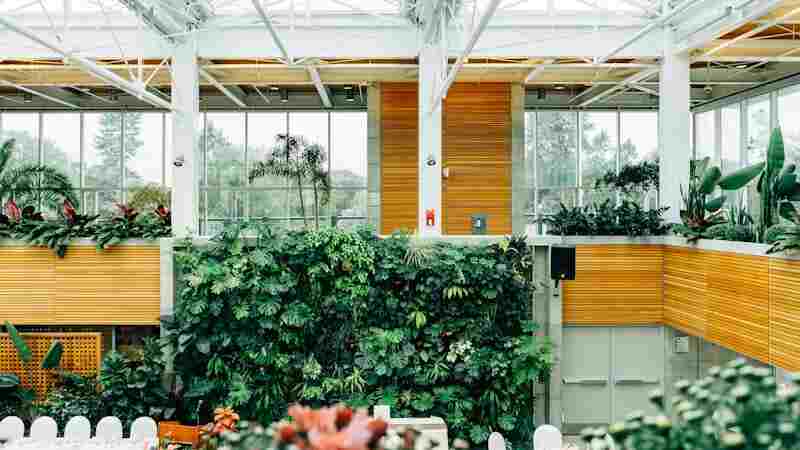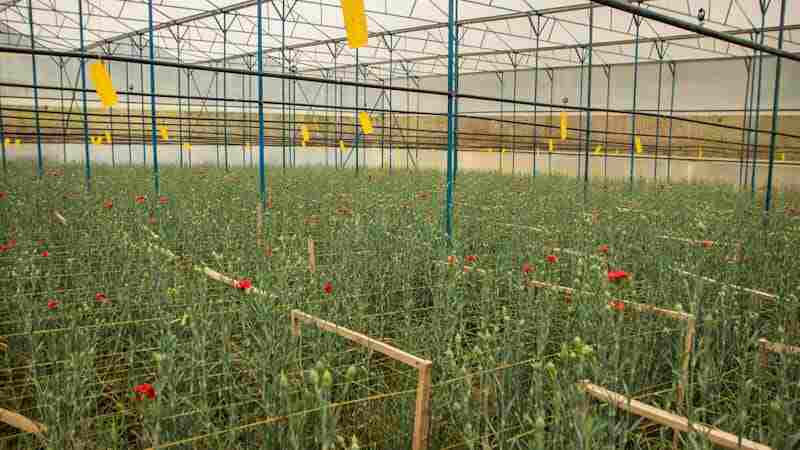Introduction
Sustainability is becoming a hot topic, and it’s not just about reducing your carbon footprint—it’s about creating eco-friendly spaces like your garden! Growing your sustainable garden not only benefits the planet, it’s also good for you. Imagine picking fresh vegetables from your backyard, knowing they are organic and eco-friendly. Whether you’re a beginner or a seasoned gardener, these tips will help you create a more sustainable, green garden at home.
What is a sustainable garden?

A sustainable garden works in harmony with nature rather than against it. The idea is to cultivate plants that require fewer resources such as water, pesticides, and fertilizers. Sustainability in Gardening means using practices that nurture the environment, maintain soil health, conserve water, and reduce waste. The goal is to reduce environmental impact while growing healthy, productive plants.
The success of your garden starts with choosing the right location.
Here’s what to keep in mind:
• Sunlight: Most plants need 6-8 hours of sunlight, so choose a location with good exposure.
• Space: Even a small area can be transformed into a productive garden with smart planning.
Consider vertical or container planting if you have limited room.
Soil Quality: A garden that thrives is built on healthy soil. Testing your soil’s pH and nutrient levels will give you an idea of how to prepare it for planting.
Soil health and preparation
Good soil health is key to sustainability. Instead of relying on synthetic fertilizers, focus on natural ways to improve soil quality:
Composting: Add organic matter such as kitchen scraps and yard waste to enrich your soil.
Mulching: Mulch helps retain moisture, suppress weeds, and break down nutrients for the soil.
Composting also prevents organic waste from ending in landfills, making it a winner!

Rainwater harvesting: Rainwater harvesting can significantly reduce your garden’s water consumption. Use barrels or other containers to catch rainwater and use it to hydrate your plants. Rainwater harvesting involves collecting and storing rainwater for later use, which can greatly reduce your dependence on municipal water sources. Here’s how to implement it:

Collection systems: Install rain barrels or cisterns underneath to catch runoff from your roof. Make sure they have a cover to prevent mosquito breeding.
Filtration: Use mesh screens to filter debris before entering water storage containers. This keeps the water clean for use in your garden.
Uses: Collected rainwater can be used for irrigation, watering plants, or even for non-potable domestic uses such as flushing toilets.
Benefits: It not only conserves water but also reduces stormwater runoff, which can prevent erosion and water pollution.
Choosing eco-friendly plants
Choosing the right plants is critical to a sustainable garden. Native plants are adapted to your local climate, making them more drought-tolerant and less dependent on fertilizers. Here are some plant choices to consider:
Native Plants:
- Adaptation: Native plants are species that occur naturally in your area. They have evolved to cope with local climate conditions, soil types, and pests. These are well-adapted to your environment and require little maintenance.
Companion plants: Planting certain plants together can help deter pests and improve growth without chemicals. - Drought resistance: Many native plants are naturally drought tolerant, requiring little water once established. This is particularly crucial in drought-prone areas.
- Biodiversity: Native plants support native wildlife by providing food and habitat, including pollinators such as bees and butterflies. It contributes to preserving the ecological equilibrium.
- Companion plants: Mutual benefits: Some plants can benefit others when grown together. This practice can increase growth, deter pests, and improve soil health without the need for chemical fertilizers or pesticides.
Examples:
Basil and Tomatoes: Basil can repel insects that infest tomatoes while enhancing their flavor.
Nasturtiums and Cucumbers: Nasturtiums can repel aphids and other pests from cucumbers while attracting beneficial insects.
Organic fertilizers and natural pest control
Avoid synthetic chemicals and fertilizers that harm the environment. Instead, choose organic alternatives:
• Organic Fertilizers: Organic fertilizers such as manure or compost feed your plants without introducing harmful organic fertilizers are obtained from natural sources and improve soil health by providing essential nutrients to plants. Here are some of the main types and benefits:
Types of organic fertilizers:
Compost: Decomposing organic matter that enriches the soil with nutrients and improves its structure. It encourages beneficial microbial activity.
Manure: Animal waste (such as cows, horses, or chickens) that adds nutrients and organic matter to the soil. It should be aged well to avoid pathogens and strong odors.
Bone meal: A slow-release source of phosphorus and calcium, essential for root growth and flowering.
Fish emulsion: A liquid fertilizer made from fish by-products that provides nitrogen and trace minerals, promoting healthy growth.
Seaweed: Contains micronutrients and hormones that promote plant health and stress resistance.
Advantages:
Benefits: Soil Health: Organic fertilizers improve soil structure, retain moisture, and increase biodiversity in soil ecosystems.
Sustainability: They are usually made from renewable resources and contribute to a circular economy.
Less chemical run-off: Using organic fertilizers reduces the risk of water pollution and helps maintain a healthy ecosystem.
2. Natural pest control
Natural pest control methods focus on maintaining ecological balance and reducing reliance on synthetic pesticides. Here are some effective strategies:
Beneficial insects: Encourage the presence of natural predators in your garden, such as ladybugs, lacewings, and parasitic wasps, which can help control pest populations.
Companion planting: Plant some species together to naturally deter pests. For example:
Marigolds: These flowers repel nematodes and aphids.
Garlic: Known to deter a range of pests, including aphids and spider mites.
Home Remedies:

Neem Oil: Extracted from the neem tree, this oil disrupts the life cycle of insects and is effective against a variety of pests.
Soap spray: A mixture of mild soap and water can suffocate soft-bodied insects such as aphids and mites without harming beneficial insects.
Physical Barriers: Use row covers, netting, or floating row covers to physically prevent pests from reaching plants, especially during weak growth stages.
Cultural Practices: Rotate crops each season to prevent the accumulation of pests and diseases in the soil. Proper sanitation, such as debris removal, can also reduce pest habitats.
chemicals into the soil.
Companion Planting and Composting for Sustainable Gardening: Companion planting can naturally reduce pests. For example, marigolds help deter harmful insects when planted near vegetables.
Composting and waste reduction.
Sustainable gardening means recycling nutrients back into the soil
Sustainable gardening is about creating a balanced ecosystem that minimizes waste and maximizes resources. Here’s a detailed look at companion planting and composting as essential methods to achieve this goal.
1. Companion planting
Companion planting involves strategically placing different plants close together to increase growth, deter pests, and improve the garden’s overall health. Here’s a closer test:
Pest Prevention:
Basil and Tomatoes: Basil can enhance tomatoes’ flavor while repelling pests such as hornworms and whiteflies.
Nasturtiums: These can attract aphids away from vegetables, acting as a “trap crop.”
Enhanced Growth: Corn, Beans, and Squash: Known as the “Three Sisters,” these plants benefit each other. Corn helps beans to climb, beans fix nitrogen in the soil, and squash leaves help suppress weeds and retain moisture.
Soil Improvement:
Legumes: Plants such as peas and beans can enrich the soil with nitrogen through their root nodules, benefiting nearby crops.
Biodiversity: Companion planting increases plant diversity in the garden, which can increase resilience to pests and diseases while promoting a balanced ecosystem.
Compost system: Set up a bin or pile in your yard to turn food scraps and garden waste into nutrient-rich compost.
• Reuse waste: Grass clippings, leaves, and other garden debris can be reused as mulch, helping to reduce waste.
Energy efficiency in gardening.

Sustainability goes beyond the plants themselves. It’s important to consider how energy-intensive your gardening practices are:
• Solar-powered garden tools: Invest in solar-powered garden lights or energy-efficient tools to reduce electricity consumption.
• Hand tools: Use hand tools like hand mowers or push mowers instead of gas-powered tools.
Mulching for soil conservation.
Water Retention: Mulch helps the soil retain moisture, reducing the need for frequent watering.
• Weed suppression: Mulching keeps weeds at bay and improves soil quality as it decomposes.
Use organic mulch such as straw, wood chips, or leaves to keep your garden green and sustainable.
Understanding climate resilience: Climate resilience in horticulture refers to your garden’s ability to tolerate and adapt to changing climate conditions, such as extreme weather events, temperature fluctuations, and changing rainfall patterns.
Choosing resilient plants: Choose plants that can thrive in dry conditions, requiring less irrigation.
Heat-Tolerant Varieties: Choose varieties that can withstand high temperatures without wilting or suffering from heat stress.
Methods of Soil Conservation Cover crops: Plant cover crops in the off-season to prevent soil erosion and maintain soil health.
No-Till Gardening: Minimize soil disturbance to preserve soil structure and improve water retention.
Water management strategies Irrigation: Use a drip system to conserve water and deliver it directly to plant roots.
Swales and Rain Gardens: Design your garden to capture and manage, allowing water to seep into the soil.
Seasonal planting adjustments
Planting Calendar: Adjust planting times based on changing weather conditions and historical weather patterns in your area.
Creating microclimates: Use structures, plants and terrain to create shelters that protect plants from strong winds and extreme temperatures.
Community involvement: Knowledge sharing: Engage with local gardening groups to share experiences and strategies for building climate resilience in your gardens.
Greenhouse Gardening for Sustainability.

If you have the space and resources, building a small greenhouse can extend your growing season while maintaining:
• Energy-efficient greenhouses: Use environmentally friendly materials, such as recycled wood or glass, and install energy-efficient systems to heat and cool the space.
Encouraging biodiversity
Biodiversity is vital to a healthy garden. By encouraging a variety of plants and animals, you create a more resilient ecosystem:
• Attracting Pollinators: Planting flowers such as lavender or sunflowers helps attract bees and butterflies, which are essential for pollination.
• Beneficial insects: Ladybugs and other beneficial insects can naturally control pests, reducing the need for chemical pesticides.
Urban gardening and small space solutions.
Even if you live in a city or have a small space, you can still grow a sustainable garden:
Container gardening: Use pots and containers to grow herbs, vegetables, and even small fruit trees on patios or balconies.
• Vertical gardening: Maximize your space by growing plants upwards using trellises or wall-mounted planters.
Importance of seed saving
Saving seeds from your plants is a great way to promote sustainability:
• Saving heirloom seeds: By saving seeds from heirloom plants, you can preserve genetic diversity and avoid buying new seeds every year.
In recent years, there has been a push for sustainability, which encourages individuals to consider their impact on the environment. One way to make a positive contribution is to cultivate a sustainable garden. Green gardening is not just a trend. It’s a lifestyle choice that promotes biodiversity, reduces waste, and enhances the beauty of our natural environment. In this comprehensive guide, we’ll explore effective green gardening tips to help you grow your sustainable garden.
1. Understanding sustainable gardening
What is sustainable gardening?
Sustainable gardening is a method that focuses on growing plants in an environmentally friendly manner. It emphasizes the use of resources in a way that minimizes damage to the environment, promotes biodiversity and encourages soil health. This approach incorporates a variety of practices, including organic gardening, permaculture, and xeriscaping.
Benefits of Sustainable Gardening
• Environmental impact: Sustainable gardening helps reduce carbon footprint and promotes the health of local ecosystems.
• Healthy food: Growing your organic fruits and vegetables means fewer pesticides and chemicals, which makes for healthier food choices.
• Cost-effective: Once established, a sustainable garden can reduce grocery bills.
• Biodiversity: It encourages a diverse range of plants and wildlife, which is vital for a balanced ecosystem.
2. Planning your sustainable garden
Choosing the right location The first step to creating a sustainable garden is choosing a suitable location. Consider the following factors
Water source: Ensure easy access to water, but also consider natural rainfall patterns.
Designing Your Garden Layout
A well-thought-out layout can increase the efficiency and productivity of your garden. Here are some suggestions:
• Companion planting: Some plants benefit from being close to others
Crop rotation: Changing the location of certain crops each year helps prevent soil depletion and pest infestation.
• Raised Beds: Consider building a raised garden bed. They improve drainage, reduce soil compaction, and make gardening more accessible.
3. Choosing plants for your sustainable garden.
Native plants
Choosing native plants is one of the best ways to promote sustainability. These plants are adapted to the local environment, requiring less water and fewer resources. They also attract native wildlife, including beneficial pollinators.
Organic seeds and seeds
Choose organic seeds and plants. They are grown without artificial fertilizers or pesticides, ensuring you start your garden off on the right foot.
Edible landscape
Add edible plants to your landscape. Not only does it create an attractive yard, but it also provides fresh produce. Consider fruit trees, berry bushes, and herb gardens along with ornamental plants.
4. Soil health
Composting
Making your compost is a great way to improve your garden soil. Composting reduces kitchen and garden waste while providing nutrients to your plants. Here’s how to get started:
• Collect materials: Use kitchen scraps (vegetable peels, coffee grounds) and yard waste (leaves, grass clippings).
• Layering: alternating between green material (rich in nitrogen) and brown material (rich in carbon).
Aerate: Turn the compost every few weeks to ensure proper aeration and decomposition.
Mulching

Mulching is important for maintaining soil moisture, suppressing weeds, and improving soil health
Drought tolerant plants
Choose plants that require less water, especially in dry climates. Succulents, lavender, and other drought-resistant species can thrive with minimal watering.
6. Pest management:
Integrated Pest Management (IPM)
Cultural control: rotate crops, maintain healthy soil, and select pest-resistant plant varieties.
Biological control: Introduce beneficial insects, such as ladybugs or lacewings, to naturally control pest populations.
Organic pesticides
If necessary, opt for organic pesticides. Neem oil, insecticidal soap, and diatomaceous earth are effective and less harmful alternatives to synthetic chemicals.
7. Promoting biodiversity. Pollinator Gardens
Create a habitat for pollinators like bees and butterflies by planting a variety of flowering plants. Add native wildflowers, herbs, and fruiting plants to provide food and shelter.
Features of the residence
Add elements such as birdhouses, water features, and native shrubs to attract wildlife. It promotes a balanced ecosystem and enhances the beauty of your garden.
8. Minimize waste.
Reuse and recycling
Use content you already have. Old containers can be turned into planters, and wooden pallets can be turned into raised beds.
Green Waste Management
Implement a system for green waste management. Composting is one way, but you can also use yard waste as mulch or create a brush pile for wildlife habitat.
9. Seasonal maintenance.
Winter Preparation
Winterize your garden to ensure it stays healthy for the next growing season. Some suggestions include:
Mulching: Apply a layer of mulch to protect plant roots from freezing temperatures.
• Cover crops: Plant cover crops like clover or rye to improve soil health and prevent erosion.
Spring Awakening
As spring approaches, it’s time to assess your garden
10. Continuous learning and adaptation.
Stay informed
Gardening is a lifelong learning process. Be aware of sustainable practices, new plant varieties, and modern gardening techniques. Join local gardening clubs or online forums to share experiences and knowledge.
Reflection and adaptation
After each growing season, reflect on what worked and what didn’t. Adapt your methods and practices to improve your sustainable garden year after year.
CONCLUSION:

Growing a sustainable garden isn’t just a rewarding hobby. It’s a fulfilling journey that deepens your connection to the natural world and allows you to make a positive contribution to the environment. Everything you do in your garden, from conserving water to choosing native plants, has an impact on the surrounding ecosystem. By implementing these green gardening tips, you not only create a thriving, beautiful garden but also promote biodiversity, improve soil health, and reduce waste, all while reducing your carbon footprint. Reduces footprint.
Sustainable gardening is a long-term commitment to nurturing the environment around you. It’s about making thoughtful choices, whether it’s collecting rainwater, using organic fertilizers, or attracting beneficial insects that naturally control pests. These practices not only benefit your plants but also encourage a more balanced and resilient ecosystem. In turn, your garden becomes a haven for wildlife, a source of fresh, healthy food, and a living example of how human actions can harmonize with nature.
Your garden can play an important role in this mission, showing others that environmentally friendly practices are not only achievable but also highly rewarding. Embrace the challenge, enjoy the beauty of your creation, and take pride in knowing that your green garden is contributing to a healthier, more sustainable world. Let your garden reflect your care for the planet, where growth and sustainability go hand in hand.



